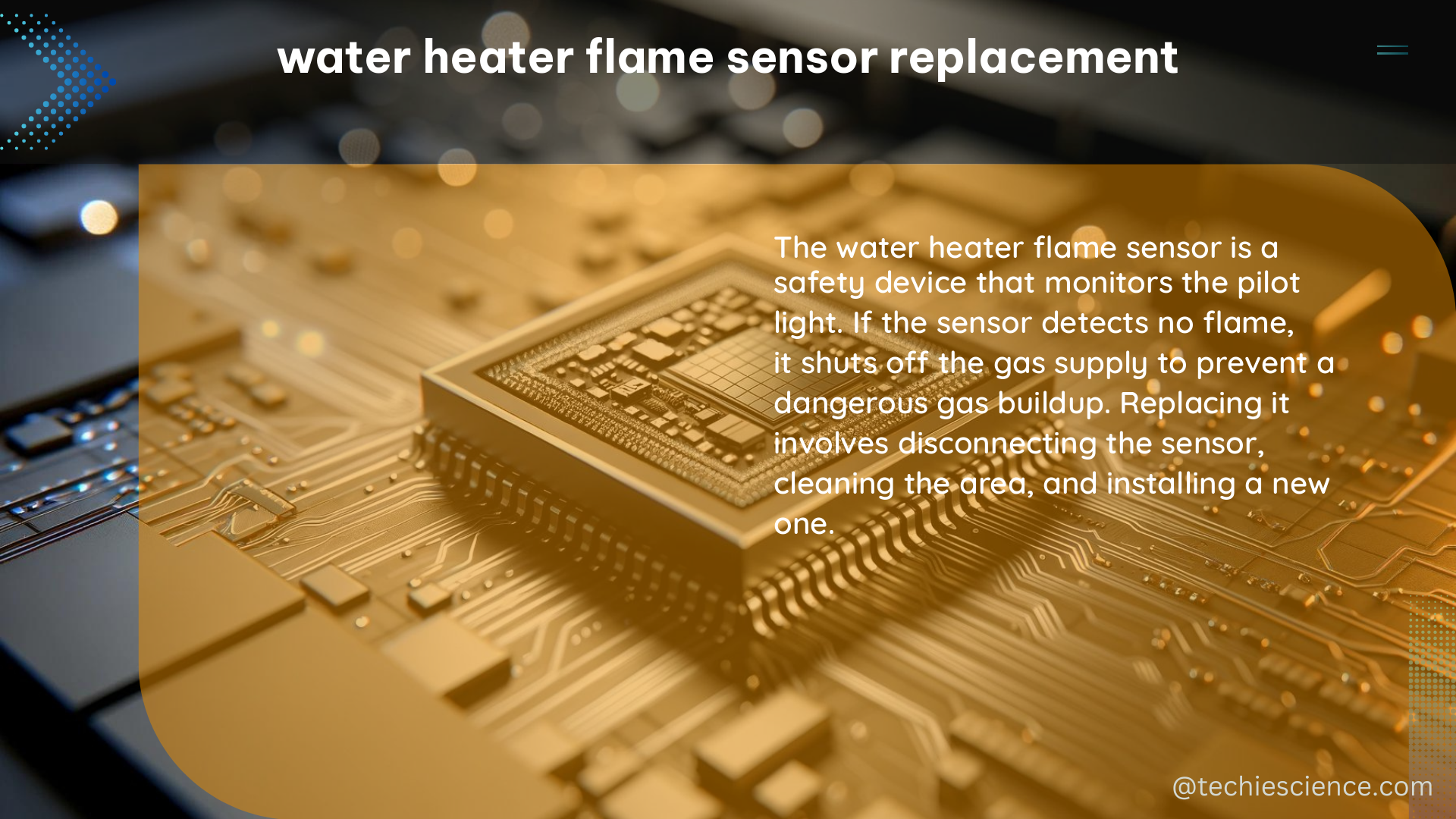Water heater flame sensors are essential components in gas water heaters that ensure the safe and efficient operation of the appliance. They detect the presence of a flame and signal the gas valve to open, allowing gas to flow to the burner. Over time, flame sensors can become dirty or damaged, leading to issues with the water heater’s performance.
Understanding Flame Sensor Wavelength Sensitivity
One critical aspect of water heater flame sensors is their wavelength sensitivity. Flame sensors typically sense infrared (IR) radiation within a specific wavelength range. For natural gas flames, the IR emission occurs at a longer wavelength, typically between 4.4 and 4.7 micrometers (μm). This can pose challenges when using certain flame sensors, as they may not be sensitive enough to detect the longer wavelength IR radiation.
In some cases, as described in the Arduino Forum discussion, the flame sensor may only sense an orange flame, while the pilot light is blue, resulting in a very slight change in the analog signal that is not reliable. This can lead to issues with the water heater’s operation, as the sensor may not accurately detect the presence of the flame.
Alternative Flame Sensor Solutions

To address the wavelength sensitivity issue, several alternative solutions have been proposed in the HVAC-Talk discussion:
-
Secondary Temperature Sensor: Using a secondary temperature sensor in addition to the flame sensor can provide a more reliable method of detecting the presence of a flame. The temperature sensor can measure the heat output of the flame, which can be used to corroborate the flame sensor’s signal.
-
Hall Sensor on Supply Line: Clamping a Hall sensor to the gas supply line can detect the magnetic field generated by the flow of gas, which can be used as an indicator of the flame’s presence.
-
Magnetic Field Sensing: Sensing the magnetic field with a Hall sensor can also be used to detect the presence of a flame, as the flame’s heat can affect the magnetic field in the surrounding area.
These alternative approaches aim to provide a more reliable and accurate method of detecting the presence of a flame, addressing the limitations of traditional flame sensors.
Flame Sensor Physical Design and Mounting
Another critical factor in water heater flame sensor replacement is the sensor’s physical design and mounting. Flame sensors are typically made of a piece of metal insulated with porcelain at the mounting. The sensor’s length is designed to optimize its performance, and changing it can negatively impact its functionality.
According to the information provided in the DoItYourself.com discussion, the sensor’s length is typically between 1.5 and 2.5 inches (38 to 64 millimeters), with a diameter of around 0.25 inches (6.35 millimeters). The sensor’s position in the flame is also crucial, as it needs to be placed within the optimal temperature range to generate a reliable signal.
When replacing a flame sensor, it is essential to follow the manufacturer’s instructions to ensure proper operation. This includes matching the sensor’s length, diameter, and mounting specifications to the original component. Failure to do so can result in the water heater not functioning correctly or even posing a safety hazard.
Flame Sensor Testing and Positioning
When testing a flame sensor, several factors can influence its performance, including the sensor’s position in the flame, the flame’s size and heat output, and the sensor’s distance from the flame. As mentioned in the DoItYourself.com discussion, a longer sensor may have the end too far from the flame, leading to a weaker signal.
To ensure optimal performance, it is essential to experiment with the sensor’s position and distance from the flame. This may involve adjusting the sensor’s angle, depth, or distance from the flame to find the sweet spot where the sensor generates a strong and reliable signal.
During the testing process, it is also important to monitor the sensor’s analog signal output to ensure it is within the expected range. This can be done using a multimeter or other diagnostic tools. If the signal is too weak or erratic, it may indicate a problem with the sensor or its positioning.
Conclusion
Water heater flame sensor replacement requires careful consideration of several technical specifications, including the sensor’s wavelength sensitivity, physical design and mounting, and positioning in the flame. By understanding these factors and following the manufacturer’s instructions, homeowners can ensure the safe and efficient operation of their gas water heaters.
References:
– Pilot Light Monitor for Hot Water Heater – Arduino Forum, 2015-01-14, https://forum.arduino.cc/t/pilot-light-monitor-for-hot-water-heater/282188
– flame sensors – HVAC-Talk: Heating, Air & Refrigeration Discussion, https://hvac-talk.com/vbb/threads/79306-flame-sensors
– How to test flame sensor and hot surface ignitor through four-slot connector – DoItYourself.com, 2022-01-24, https://www.doityourself.com/forum/water-heaters/634029-how-test-flame-sensor-hot-surface-ignitor-through-four-slot-connector.html

The lambdageeks.com Core SME Team is a group of experienced subject matter experts from diverse scientific and technical fields including Physics, Chemistry, Technology,Electronics & Electrical Engineering, Automotive, Mechanical Engineering. Our team collaborates to create high-quality, well-researched articles on a wide range of science and technology topics for the lambdageeks.com website.
All Our Senior SME are having more than 7 Years of experience in the respective fields . They are either Working Industry Professionals or assocaited With different Universities. Refer Our Authors Page to get to know About our Core SMEs.